#scifi history
Text
The First Scifi Radio Shows, 1950-1951
Debuting within a month of each other in 1950, the first scifi anthology radio shows first aired: the better known Dimension X, which was preceded a month earlier by 2000-Plus.
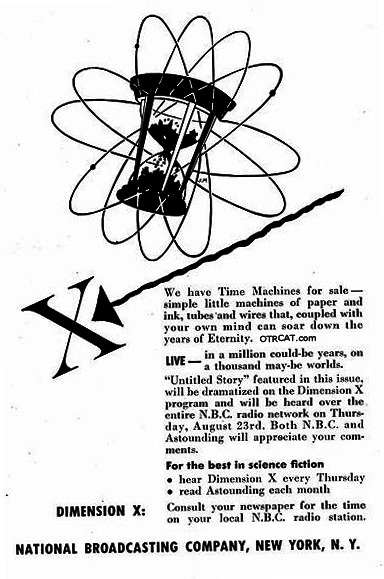
Posterity remembers Dimension X much better for several reasons. The first is that it licensed scifi stories by Arthur C. Clarke and Asimov and other writers to adapt. The second is that Dimension X used the first electronic instrument, the theramin, to give itself an eerie and distinctive, unearthly and futuristic sound. The theramin would later be used in 1954's Forbidden Planet, inspired by the Dimension X score, and something once played alongside orchestras would thereafter be the official sound of scifi, UFOs and arriving aliens.
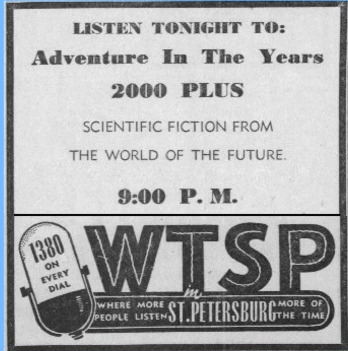
One would be forgiven for remembering that 2000-Plus premiered a full month before, and had completely original stories, as the first scifi program of any kind. Both shows wrapped up in 1951, which was around when radio itself started to be replaced by television.
Both are currently on archive.org, where they can be listened and downloaded in their entirety.
158 notes
·
View notes
Text

Panel Announcement: History of Space Opera
Joe Bongiorno shares his knowledge of the history of space opera and the authors who contributed to the sci-fi which ultimately set the stage for Star Wars to break into our galaxy
Full Schedule: https://legends-con.com/guests-programming/
Buy Tickets: https://www.eventbrite.com/e/legends-consortium-2023-tickets-541786186067
#Space Opera#Sci Fi History#Science Fiction History#SciFi History#Expanded Universe#Star Wars Expanded Universe#Star Wars Legends#SWEU#Star Wars EU#SW Expanded Universe#LegendsCon#Star Wars Books#Star Wars Comics#Star Wars Games
4 notes
·
View notes
Text
I had this very old Soundwave doodle of him as a World War One British tank, I still think it's a really cool idea lol


#transformers#au#art#digitalart#character design#photoshop#decepticons#Soundwave#robot#mecha#doodle#wip#ww1#great war#history#world war one#redesign#scifi#fanon#fanart#original design
1K notes
·
View notes
Text

"Closest we can drop you in is a few kilometers below the array. After that you're on your own- vocal or close-range telepathy only. You know the drill. Give those yankee bastards hell."
Joint Sino-Soviet psiker operation. California front. 20xx.
840 notes
·
View notes
Text

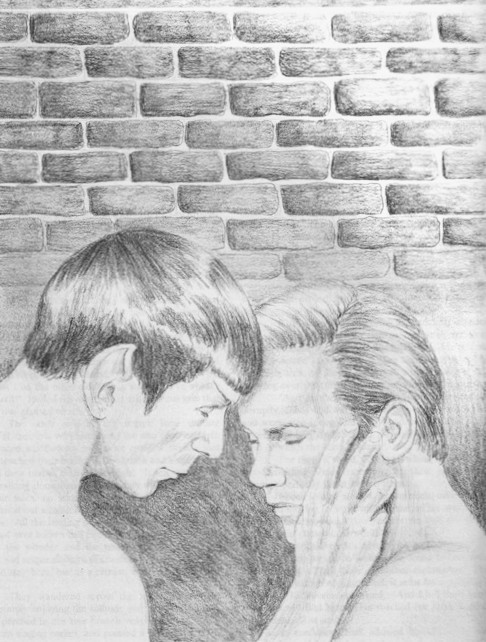
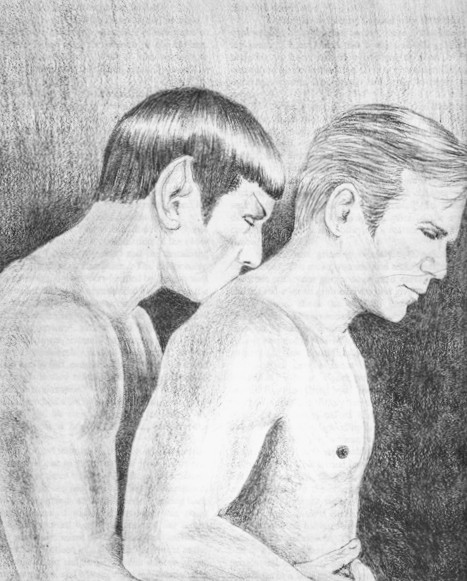



Sharing the Sunlight Fanzine & Novel | Drawings by Chris Soto, 1992
Entire work available to read here!
Editorial note from author Jenna Sinclair:
"I have been in love with the Star Trek universe and its characters for twenty-five years now. I wrote my first 'novella' in the seventh grade. Over the years I wrote sporadically, mostly in my head, never, ever satisfied, knowing that there was an elusive 'something' I was unable to grasp. But then I discovered K/S! Unbelievably, it took me a good twenty-three and a half years to do it! I felt as if I had been working on a puzzle all that time, and finally the pieces flew naturally into place. Like just about everybody else, I became obsessed. In six months, I read about 200 zines (yes, I was broke and suffering from eyestrain), and then I sat down to write an established relationship short story, as a way of saying 'thank you' to all the K/S authors, artists, and editors who had given me so much pleasure. That story refused to be written, and this first time novel came flowing from my pen instead. The first 120 pages were composed on a 25 year old typewriter which lacked a 'k,' a '/', and a '-'. You try writing a novel with Kirk, Spock, and other fairly essential words without a 'k'!"
#spirk#star trek#spock#fan art#star trek tos#captain kirk#the original series#vintage#tos#fanzine#fanfic#writing#drawing#fandom#fanzines#leonard nimoy#william shatner#star trek the original series#space#scifi#k/s#queer history#lgbt
896 notes
·
View notes
Text
Star Trek fan, 1984: “Star Trek is just something that people believe in. It gives you hope and promise. That’s why I believe in it.”
2K notes
·
View notes
Text
The history of Solarpunk

Okay, I guess this has to be said, because the people will always claim the same wrong thing: No, Solarpunk did not "start out as an aesthetic". Jesus, where the hell does this claim even come from? Like, honestly, I am asking.
Solarpunk started out as a genre, that yes, did also include design elements, but also literary elements. A vaguely defined literary genre, but a genre never the less.
And I am not even talking about those early books that we today also claim under the Solarpunk umbrella. So, no, I am not talking about Ursula K. LeGuin, even though she definitely was a big influence on the genre.
The actual history of Solarpunk goes something like that: In the late 1990s and early 2000s the term "Ecopunk" was coined, which was used to refer to books that kinda fit into the Cyberpunk genre umbrella, but were more focused on ecological themes. This was less focused on the "high tech, high life" mantra that Solarpunk ended up with, but it was SciFi stories, that were focused on people interacting with the environment. Often set to a backdrop of environmental apocalypse. Now, other than Solarpunk just a bit later, this genre never got that well defined (especially with Solarpunk kinda taking over the role). As such there is only a handful of things that ever officially called themselves Ecopunk.
At the same time, though, the same sort of thought was picked up in the Brazilian science fiction scene, where the idea was further developed. Both artistically, where it got a lot of influence from the Amazofuturism movement, but also as an ideology. In this there were the ideas from Ecopunk as the "scifi in the ecological collaps" in there, but also the idea of "scifi with technology that allows us to live within the changing world/allows us to live more in harmony with nature".
Now, we do not really know who came up with the idea of naming this "Solarpunk". From all I can find the earliest mention of the term "Solarpunk" that is still online today is in this article from the Blog Republic of Bees. But given the way the blogger talks about it, it is clear there was some vague definition of the genre before it.
These days it is kinda argued about whether that title originally arose in Brazil or in the Anglosphere. But it seems very likely that the term was coined between 2006 and 2008, coming either out of the Brazilian movement around Ecopunk or out of the English Steampunk movement (specifically the literary branch of the Steampunk genre).
In the following years it was thrown around for a bit (there is an archived Wired article from 2009, that mentions the term once, as well as one other article), but for the moment there was not a lot happening in this regard.
Until 2012, when the Brazilian Solarpunk movement really started to bloom and at the same time in Italy Commando Jugendstil made their appearance. In 2012 in Brazil the anthology "Solarpunk: Histórias ecológicas e fantásticas em um mundo sustentável" was released (that did get an English translation not too long ago) establishing some groundwork for the genre. And Commando Jugendstil, who describe themselves as both a "Communication Project" and an "Art Movement", started to work on Solarpunk in Italy. Now, Commando Jugendstil is a bit more complicated than just one or the other. As they very much were a big influence on some of the aesthetic concepts, but also were releasing short stories and did some actual punky political action within Italy.
And all of that was happening in 2012, where the term really started to take off.
And only after this, in 2014, Solarpunk became this aesthetic we know today, when a (now defuct) tumblr blog started posting photos, artworks and other aesthetical things under the caption of Solarpunk. Especially as it was the first time the term was widely used within the Anglosphere.
Undoubtedly: This was probably how most people first learned of Solarpunk... But it was not how Solarpunk started. So, please stop spreading that myth.
The reason this bothers me so much is, that it so widely ignores how this movement definitely has its roots within Latin America and specifically Brazil. Instead this myth basically tries to claim Solarpunk as a thing that fully and completely originated within the anglosphere. Which is just is not.
And yes, there was artistic aspects to that early Solarpunk movement, too. But also a literary and political aspectt. That is not something that was put onto a term that was originally an aesthetic - but rather it was something that was there from the very beginning.
Again: There has been an artistic and aesthetic aspect in Solarpunk from the very beginning, yes. But there has been a literary and political aspect in it the entire time, too. And trying to divorce Solarpunk from those things is just wrong and also... kinda misses the point.
So, please. Just stop claiming that entire "it has been an aesthetic first" thing. Solarpunk is a genre of fiction, it is a political movement, just as much as it is an artistic movement. Always has been. And there has always been punk in it. So, please, stop acting as if Solarpunk is just "pretty artistic vibes". It is not.
Thanks for coming to my TED Talk, I guess.

#solarpunk#solarpunk aesthetic#solarpunk fiction#political movement#history#history of solarpunk#amazofuturismus#put the punk back in solarpunk#scifi#science fiction#clifi#climate fiction#ecopunk
3K notes
·
View notes
Text
People don't realize how liminal it is to be a time traveler. How you don't ever really feel like you're in the time you are. Even when you're in your own time, everything is off, your coat was something you bought in interwar France, the book you're reading on the train is from a bookstore you had to visit in Victorian London, even your necklace was given to you by a Neolithic shaman, from a culture the rest of the world can never know. You find yourself acting strange even when in the present, much less in the past you have to work in.
You remember meeting a eunuch in 10th century China, and having him be one of the only people smart and observant enough to realize you were from a diffrent time. You could talk honestly with him, though still you couldn't reveal too much about your time. And it was still so strange hearing him talk casually about work and mention plotting assassinations. You're not allowed to but you still visit him sometimes.
You remember that the few times you were allowed to tell someone everything it was tragic. You knew a young woman who lived in Pompeii, who you had gotten close to, a few days before she would inevitably die. On your last day there you looked into her eyes, knowing soon they'd be stone and ash, that the beauty of her hair would be washed away by burning magma. And you hugged her, and told her that you wanted her to be safe, and told her she was wonderful and that you wanted her to be comfortable and happy. And you let her tongue know the joy of 21st century chocolate, and her eyes see the beauty of animation, knowing she deserved to have those joys, knowing it wouldn't matter soon. And you hugged her the last time, and told her she deserved happiness. And when you left without taking her it was like you were killing her yourself.
You want to take home everyone you're attached to. There's a college student you befriended in eighteen fifties Boston. And you can't help but see him try to solve problems you know humanity is centuries away from solving. And you just want to tell him. And it's not just that, the way he talked about the books and plays he likes, his sense of humor. There's so many people you want him to meet.
You feel the same way about a young woman you met on a viking age longship. She tells stories to her fellow warriors and traders, stories that will never fully get written down, stories that she tells so uniquely and so well. She has so many great ideas. You want so dearly to take her to somewhere she can share her stories, or where she can take classes with other writers, where she can be somewhere safe instead of being out at sea. She'll talk about wanting to be able to do something, or meet people, and you know you're so close to being able to take her, but you never can, unless she accidently finds out way too much then you can't.
You remember the longship that you met that young storyteller on. You were there before, two years ago for you, ten years later for the people on it. The young woman who told you stories wasn't there ten years later, you had been told why then but you only realize now, her uncle, who ran the ship, had been one of the first people to convert to Christianity in his nation. He killed her, either for not converting or for sleeping with women, you're not sure, but he killed her, and bragged about it when you met him ten years later.
You talk to the storyteller on the longship, ask her about the myths you're there to ask her about, the myths that she loves to tell. You look into her eyes knowing it's probably less then a year until her uncle takes her life. You ask her if you think that those who die of murder go to Valhalla. She tells you she hopes not, she doesn't see Valhalla as a gift but as a duty, she hopes for herself to go to Hel, where she wouldn't have to fight anymore. You slip and admit you're talking about her, telling her that you hope that's where she goes when she's killed. You hope to yourself you'll be forced to take her to the twenty first century, you're tempted even to make it worse, you want to have ruined her enough to be able to save her.
#196#my thougts#worldbuilding#writing#my worldbuilding#my writing#urban fantasy#ancient history#history#short fiction#short story#original fiction#flash fiction#viking#viking age#norse mythology#ancient rome#pompeii#science fantasy#science fiction#sci fi#scifi#queer#queer history
589 notes
·
View notes
Text
okay, so i recently watched a god-awful movie from 1971 called "Horror of the Blood Monsters". while it contained some so-bad-it's good moments, it was mostly unbearable to watch. however, the parts that were the most interesting and entertaining, were colorized clips from a 1956 black-&-white Filipino english language film called "Tagani" (Alternatively called "Kahariang Bato" for the Tagalong release). I mean just look at this!


this looks so fun!

there's elaborate creature costuming that is really fun to see and at times fairly impressive for a low budget Filipino production in the 50s! i mean, just look at these sequences involving humanoid crab and bat creatures!




and there's a surprising amount of body diversity too! there are fat folks and a few actors with dwarfism who don't appear to be playing nonhuman roles!



so, i thought, i should find a copy of Tagani that i can watch since that's what i'd really like to be watching in the first place. but...
i can't fucking find it anywhere.
no uploads, no streaming, no home video releases, not even any indications of film reels being shown of it. what the fuck? where is Tagani??? have i stumbled into lost media?
the only indications of its existence are the footage in Horror of the Blood Monsters, a poster, and a trailer uploaded to youtube. i found links to the film uploaded to youtube when i searched on duckduckgo, but when i clicked on them, the uploads were gone! I was able to find a 1080p copy of HotBM, so in a just world, i would be able to find a 1080p copy of Tagani as well.
if anyone has this magnificent film archived or knows where i can go to find a copy of this, please let me know! i'd love to watch it and help preserve it! if you'd like to watch the Tagani segments in Horror of the Blood Monsters, i recommend skipping most of the portions involving the main cast of white american actors for the best experience. I do not recommend watching the full film as it's SO boring in most scenes. but the Tagani scenes never fail to entertain
#scout's life#archivist scout#tagani#atomic age scifi#prehistoric films#movie monsters#lost media#movies#film history#filipino film#Kahariang Bato#cavemen#horror of the blood monsters#70s movies#50s movies#retro#vintage#film archival#preservation#film preservation
172 notes
·
View notes
Text

Maya Andreyeva is a "camera," a reporter with virtual-reality-broadcasting equipment implanted in her brain. What she sees, millions see; what she feels, millions share.
And what Maya is seeing is the cover-up of a massacre. As she probes into the covert political power plays of a radically strange near-future Russia, she comes upon secrets that have been hidden from the world…and memories that AI-controlled thought police have forced her to hide from herself. Because in a world where no thought or desire is safe, the price of survival is betrayal - of your lover, your ideals, and yourself.
happy (re)publication day to The Fortunate Fall by Cameron Reed, the lesbian cyberpunk cult classic that's been out of print for almost 3 decades!
it's a dark, intense, haunting book (if somewhat dense and undeniably demanding) about the place where noble ideals and brutal reality meet, about human nature, about how far you're willing to go for your principles, or for love, or for survival, about the erosion of privacy by technology, and about a whale.
it's some of the best cyberpunk has to offer, i'm really glad it can finally reach a wider audience 👁📷🐋
#yayyy now i can recommend this book without the caveat that it's near impossible to find!#.txt#books#the fortunate fall#also since queer scifi history is kind of my thing:#it's worth noting that this is one of the *very* few 20th century sci-fi novels (that i know of at least) written by a trans woman!
95 notes
·
View notes
Text
A History of Faster than Light Communications
One of the technologies taken for granted in science fiction and space opera is faster than light communication...or as scifi fans call it, an ansible. In reality, most communications are limited by the speed of light, so it takes a delay of a few minutes to send and receive messages even in a solar system. As 2001 pointed out, it would take 6 hours and back for a radio message to reach Saturn. A traditional radio signal sent to the closest star would take four years to arrive.

Isaac Asimov coined the term “ultrawave” or “hyperwave communications” in his Foundation novels in the 1950s, to refer to signals that propagate along “subspace,” a lower level dimension where travel is quicker. Only information can travel in subspace, but people and objects can’t. Jack Williamson mentioned “rhodomagnetic waves” in a few of his scifi stories, which function as a kind of intergalactic communicator, but also are the basis for a death ray, meaning in his universe, any ftl communication device can be rewired with a minimum of effort by a boffin into a lethal death ray.

In the 70s, Ursula K. le Guin popularized the term “Ansible” for this kind of communicator, instantly able to communicate regardless of distance. It’s this term that seemed to stick among fans and scifi culture, and most people with this device in their stories call it an “ansible” in homage to le Guin. Ansible communicators are just a part of scifi now, generic scifi worldbuilding, along with hyperspace travel, neuronic whips, space marines, and wisecracking robots. Many scifi writers have ansibles in their stories who are completely unaware of who originally coined the term and where.
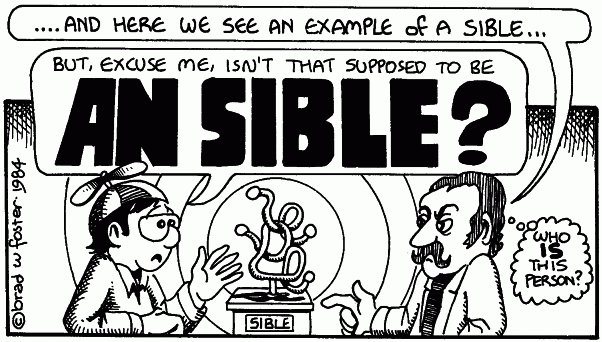
For most scifi writers, instant FTL communication is just a plot convenience to move the story along. Even Asimov, who made overthinking things his M.O., didn’t spend any extra time thinking about it. But James Blish however, put a lot of energy into figuring out how a faster than light or instant communicator would actually work....and he came to the conclusion it would be a technology with enormous philosophical, and indeed, practically religious implications.
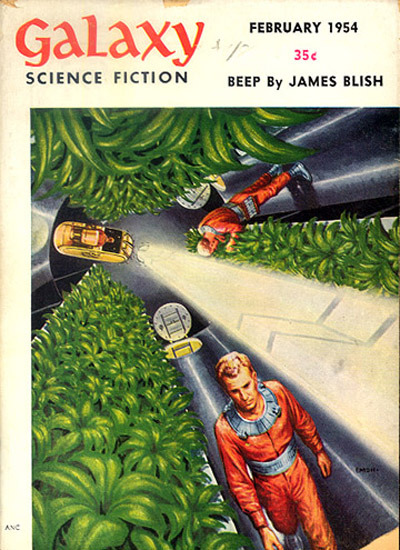
Here is what I mean by that. In his story “Beep” in 1954, James Blish came up with the idea of a Dirac Communicator, which is the usual instant, no delay ansible. But Blish reasoned that the only way instant faster than light communications could actually work without any delay is by sending a signal into a null-dimension without time, so every single message ever sent (past, present, future) is sent simultaneously in a timeless null point, with machines only able to decode the time-sealed relevant messages they receive.
If you stop and consider this, if a technology worked this way, it means that we live in a completely deterministic universe where all our decisions are made in advance. And as Blish was intelligent (and wiseassed) enough to point out in his 1954 story, it means that if faster than light communications actually work in the universe, that free will is an illusion, and that we actually do not have it. The universe is a watch proceeding on a predetermined pattern set at the moment of creation. An interesting conclusion to draw, all from a technology scifi takes for granted and sit in the background.
388 notes
·
View notes
Text
Neuromancer (C64/DOS, Interplay, 1988/1989)
You can play it in your browser here. Controls for the DOS version include the mouse; keyboard controls can be found in the reviews below the game. C64 controls include numpad 84620 for joystick.


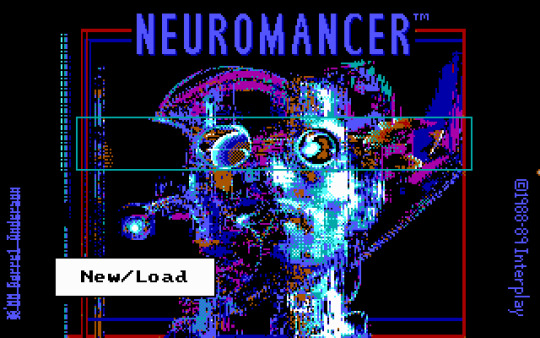

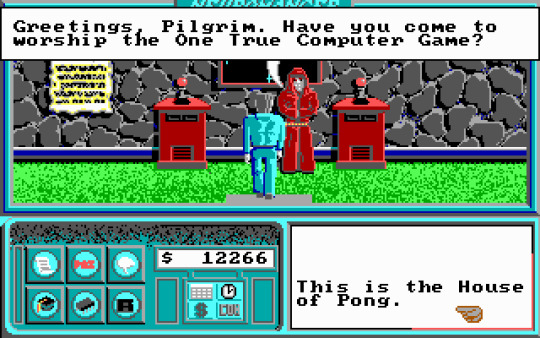

#internet archive#in-browser#c64#commodore 64#dos#dos games#game#games#video game#video games#videogame#videogames#computer game#computer games#licensed games#obscure games#cyberpunk#neuromancer#william gibson#scifi#sci fi#science fiction#game history#gaming history#retro games#retro gaming#1988#1989#1980s#80s
153 notes
·
View notes
Text



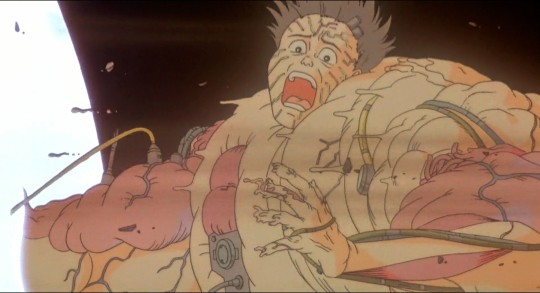

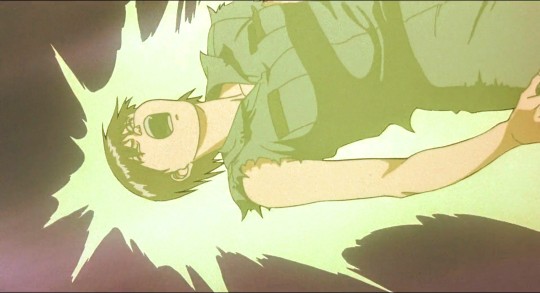




Neo-Tokyo is about to E-X-P-L-O-D-E
Akira (1988)
#akira#retro#scifi#anime#film#dystopia#cyberpunk#animation#1980s#manga#fantasy#movies#80s#art history#dark#cinema#surreal#science fiction#horror#apocalypse#☢️
224 notes
·
View notes
Text



Is there a Doctor in the Tardis?
A genuine police box from the 1950's sited at Wetherby (West Yorkshire) police station. Seems a little battered from space and time.
#Tardis#DW#Doctor Who#Dr Who#SciFi#Sci-Fi#Blue#Box#Police#History#Heritage#Vintage#Places#Travel#Wanderlust#Light Academia#Culture#TV#Aesthetic#Photography
86 notes
·
View notes
Text
stranger things season one 2016 was so fucking incredible. it exists as an entirely different entity to me than the rest of the show. you literally just had to be there. to this day nothing has ever come close to the amount of universal love for a fictional story that stranger things first received. ive been chasing this high for eight years.
#ik theres a lot of young fans of this show that are teenagers rn and listen#if you were too young to watch this when it first came out I DONT THINK YOU REALIZE HOW HUGE IT WAS AT THE TIME#THE FIRST TEASER FOR SEASON TWO LITERALLY PREMIERED DURING THE SUPERBOWL#THAT ALPHABET WALL DID SOMETHING TO OUR BRAINS AND CHANGED THE WAY WE MAKE AND CONSUME SCIFI FOREVER#i genuinely believe that scene of joyce looking around at all the lights is one of the most iconic scenes in tv history#like i cant even explain it to you we lost our fucking minds over this show it was unlike anything anybody has ever seen#this was such a pivotal memory of my junior and senior year year of high school#everyone was wearing merch my teachers would gush about it in class everyone tuned in to watch the cast on fallon it was EVERYWHERE#and do not even get me started on halloween that year oh my god#it was just so fucking fun i miss it#just rewatched s1 and all i can think about is 17 year old me losing my fucking mind#its such an amazing season#i do understand why some people say they wish it stopped at season one im glad they didnt but i see where theyre coming from#stranger things#byler
108 notes
·
View notes
Text
Star Trek fan, 1984.
333 notes
·
View notes